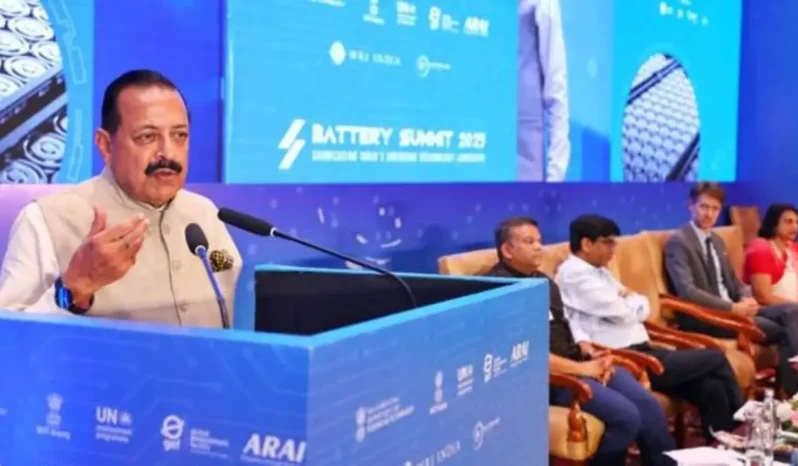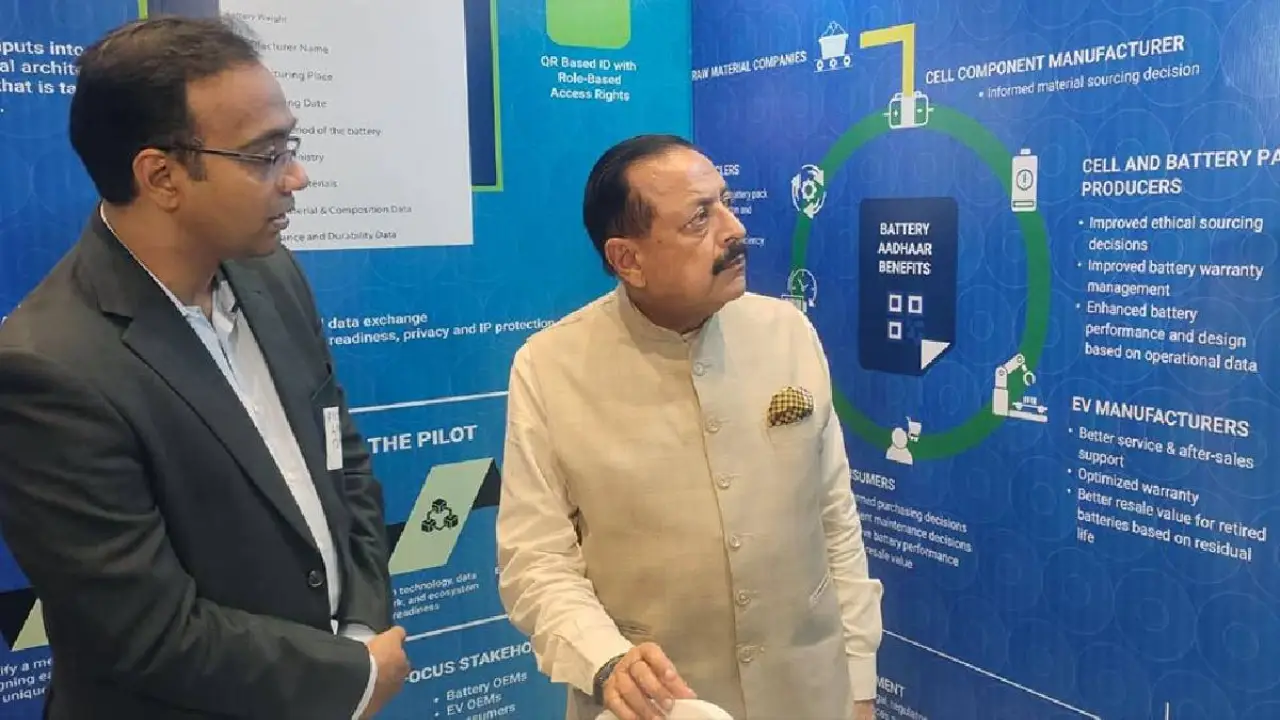New Delhi, May 31, 2025 — India has made a bold step towards clean mobility and a circular energy economy. With the official inauguration of the ‘Battery Aadhaar’ program at the Battery Summit 2025. Launched by Dr. Jitendra Singh, Union Minister of State for Science and Technology. This cutting-edge digital identification program aims to change the way batteries are traced, handled, and recycled. On the nation’s rapidly growing electric vehicle (EV) and energy storage front.
Battery Aadhaar: A Digital Identity for Every Battery
Battery Aadhaar identifies each battery produced in India with a unique digital ID. Similar to a “digital passport.” This ID tracks key points of information during the lifetime of the battery, including:
- Manufacturer identity and location
- Year of manufacture
- Battery chemistry and capacity
- Material composition and electrode details
- Usage history, charge-discharge cycles, and thermal incidents
- Safety certifications and compliance records
- End-of-life status and recycling details
The system is built on Tata Elxsi’s MOBIUS+ platform, which integrates blockchain technology. For secure, tamper-proof traceability and automated compliance reporting. This ensures that every battery’s journey is transparently documented and verifiable. From raw material sourcing to manufacturing, second-life applications, and eventual recycling.
Battery Aadhaar: Key Features and Industry Impact
- End-to-End Lifecycle Tracking:: Battery Aadhaar enables real-time monitoring of operational parameters, Predictive maintenance, and efficient recycling. Ensuring maximum resource recovery and safety throughout the battery’s life.
- Counterfeit Prevention and Consumer Protection: By offering authenticated information on the source and history of every battery. The system serves as an effective anti-counterfeit regulatory tool, enhancing consumer safety and confidence.
- Regulatory Compliance and Global Alignment: The program facilitates Indian and global standard compliance. Such as the EU Battery Regulation, and streamlines reporting for policy environments. Establishing India as a leader in best practices for battery management.
- Circular Economy and Sustainability: Battery Aadhaar is at the core of India’s circular battery economy vision. Encouraging safe reuse, environmentally responsible recycling, and eco-stewardship. It also joins flagship government initiatives such as the Production Linked Incentive (PLI) Schemes. Advanced Chemistry Cells, FAME, and PM-eDrive, all working toward enabling India’s clean energy transition at a faster pace.
Battery Aadhaar: Global Context and Industry Reactions
India’s Battery Aadhaar follows a similar approach such as Germany’s battery passport. Adapted to the specific needs of India’s market with the assistance of UNEP, GEF, and NITI Aayog. Industry leaders, scientists, and policy experts have lauded the initiative in large numbers. As a vital step towards resolving issues such as unsafe reuse, regulatory non-compliance, and inefficient recycling on a systemic level.
Consortium and Technology Partners
The initiative is an effort in collaboration with Tata Elxsi, Tata Motors, Tata AutoComp Systems, IIT Kharagpur, WRI India, LOHUM Cleantech, NUNAM Technologies, and Oorja Energy under the Department of Science and Technology (DST) and NITI Aayog.
ELCTRIK Speaks
Battery Aadhaar will be the backbone of India’s battery intelligence system. Turning a disjointed market into a transparent, data-driven, and smartly managed network. By making each battery traceable, safe, and sustainable. India is not just securing its EV revolution but creating a new global benchmark for battery lifecycle management.







